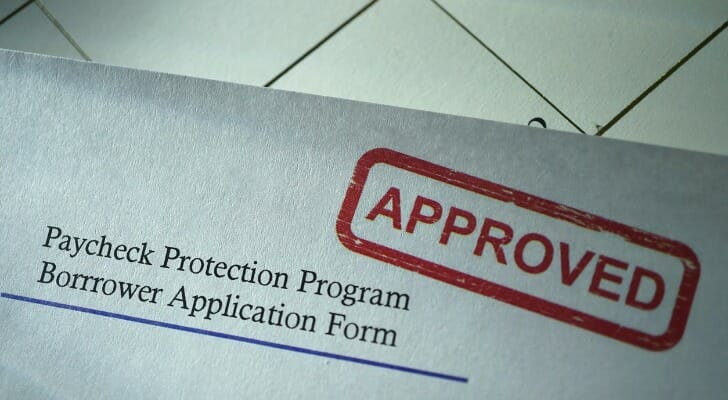 The stated goal of the Paycheck Protection Program (PPP) is to help small businesses keep employees on their payrolls. The program’s relatively simple loan application and relaxed requirements are meant to enable small businesses to get quick access to liquidity so they don’t have to resort to layoffs or furloughs during mandated closures and social distancing orders. If borrowers use the money as the federal government intends, the loans are forgiven. With the recent passage of the Paycheck Protection Program Flexibility Act (PPPFA), though, the government changed many of the rules, largely to be more flexible. Read on to know the rules to ensure that you receive full debt forgiveness.
The stated goal of the Paycheck Protection Program (PPP) is to help small businesses keep employees on their payrolls. The program’s relatively simple loan application and relaxed requirements are meant to enable small businesses to get quick access to liquidity so they don’t have to resort to layoffs or furloughs during mandated closures and social distancing orders. If borrowers use the money as the federal government intends, the loans are forgiven. With the recent passage of the Paycheck Protection Program Flexibility Act (PPPFA), though, the government changed many of the rules, largely to be more flexible. Read on to know the rules to ensure that you receive full debt forgiveness.
PPP Loans: An Overview
PPP loans have many attractive features. The loans feature a low 1.0% annual interest rate, and borrowers get five years (up from two) to pay them back. In fact, they don’t have to make any payments for six months. The real benefit, though, is that under the right circumstances, loans can be forgiven, effectively turning the loan into a grant. That means borrowers don’t have to pay the money back at all. Tax obligations also are eased: Any loans forgiven under the program aren’t considered taxable income.
PPP Loan Forgiveness Criteria
Given that the Small Business Administration (SBA) has $659 billion to hand out in PPP loans to millions of businesses, forgiveness is a major issue on many of these borrowers’ minds. The basic outline of how to qualify for forgiveness is fairly simple. Businesses have to use the loan proceeds to pay for payroll. They may also spend up to 40% (up from 25%) of the loan on:
- Mortgage payments during the covered period
- Rent during the covered period
- Utilities during the covered period
However, beyond those basics it gets more complicated. Here are nine criteria for spending the money:
- Borrowers have 24 weeks after they receive their loans to spend the loan proceeds, until December 31 at the latest. (Previously, they had only eight weeks.)
- To qualify for full forgiveness, at least 60% (down from 75%) of loan proceeds have to go toward payroll.
- Wages are limited to annual salaries of $100,000 per employee. So the most you can claim for an employee who makes more than $100,000 per year is $15,385 for the eight-week covered period or $46,154 for the 24-week covered period (you can choose which length.) The cap of $15,385 per person also applies to owners, partners and self-employed individuals.
- The salary limit applies to cash compensation only, not non-cash benefits such as health insurance, employer retirement plan contributions and state and local employer payroll taxes.
- To calculate their average pre-pandemic payroll amount, most borrowers will use total payroll costs for either calendar year 2019 or the 12 months prior to their loan application.
- The amount eligible for forgiveness will be reduced if less than 60% of proceeds go toward payroll. But per the SBA’s forgiveness application, you can choose which allowed non-payroll costs you include in your calculation to keep them at or under 40%.
- Forgiveness eligibility will also be reduced if employers don’t keep all employees on board or rehire them by December 31, 2020 (extended from June 30). However, per the SBA, there is a safe haven if you fire any workers for cause or if they choose to leave, say, for a different job and you can’t find a qualified replacement. Also, the recently enacted PPPFA says that you don’t have to refill a spot if you can’t rehire the individual who was let go, can’t find a qualified person to fill the spot or can demonstrate an inability to return to your pre-pandemic level of business activity due to health directives related to COVID-19.
- Employees who live outside the U.S. are excluded.
- When calculating employee payroll, do not include independent contractors, who are eligible to apply for their own PPP loans.
Other PPP Complications
Those are the major refinements that will affect most small businesses. However, there are a number of other provisions that may – in some cases – apply, including:
- PPP loans are not to be used to cover sick and family leave wages that qualify for a credit under an earlier COVID stimulus bill, the Families First Coronavirus Response Act.
- Seasonal businesses can determine their payroll by using the monthly average from Feb. 15, 2019, or March 1, 2019, and June 30, 2019.
The PPP Future
 Congress enacted the original CARES Act law and a subsequent expansion of the funding for it in just a few weeks. As of July 10, 2020, there was about $138 billion of PPP funding left (the number has been oscillating up and down because some borrowers are returning their loans).
Congress enacted the original CARES Act law and a subsequent expansion of the funding for it in just a few weeks. As of July 10, 2020, there was about $138 billion of PPP funding left (the number has been oscillating up and down because some borrowers are returning their loans).
The speed with which this unprecedented stimulus transfer occurred left a number of significant questions unanswered. As issues come to light, regulators are clarifying the requirements for forgiveness with a series of refinements.
For instance, SBA and Treasury have issued a new rule that prevents employers from being penalized if laid off or furloughed employees decline to return to work. This issue has come up because the unemployment benefits under the CARES Act are sizable enough that some employees are receiving significantly more from unemployment benefits than they were earning from wages.
At the same time, Congress is acting to change the legal underpinnings. The PPPFA fixed some flaws, and as a result, the SBA has revised its loan forgiveness application and issued an “EZ version.” Still, many flaws remain. The HEROES Act, passed by the House, addresses some of them, including extending the deferral period from six months to one year. We’ll update this story as more guidance is issued or legislation regarding the PPP is passed.
The Bottom Line
 Small employers who received PPP loans are eligible to have the debt forgiven if they meet certain standards. The basic requirement is that they use the money to keep employees on the payroll during the COVID-19 business interruption. This means they must maintain full-time head count as well as payroll. If they let people go, small business owners have until December 31 to rehire or fill those positions. With the passage of the PPPFA, they can spend 40% of the loan on qualified non-payroll costs and they have 24 weeks (instead of only eight) to spend the money.
Small employers who received PPP loans are eligible to have the debt forgiven if they meet certain standards. The basic requirement is that they use the money to keep employees on the payroll during the COVID-19 business interruption. This means they must maintain full-time head count as well as payroll. If they let people go, small business owners have until December 31 to rehire or fill those positions. With the passage of the PPPFA, they can spend 40% of the loan on qualified non-payroll costs and they have 24 weeks (instead of only eight) to spend the money.
Tips for Handling Business Taxes
- Consider working with a financial advisor experienced in business tax issues. Finding the right financial advisor who fits your needs doesn’t have to be hard. SmartAsset’s free tool matches you with financial advisors in your area in five minutes. If you’re ready to be matched with local advisors who will help you achieve your financial goals, get started now.
- The CARES Act has modified the tax code to help business owners hit financially by the COVID-19 pandemic. One key change involves the rules for business interest deductions. These changes, like other business-focused provisions of the CARES Act, are designed to provide some financial relief.
Photo credit: ©iStock.com/pixelfit, ©iStock.com/Natalie_magic, ©iStock.com/Kameleon007